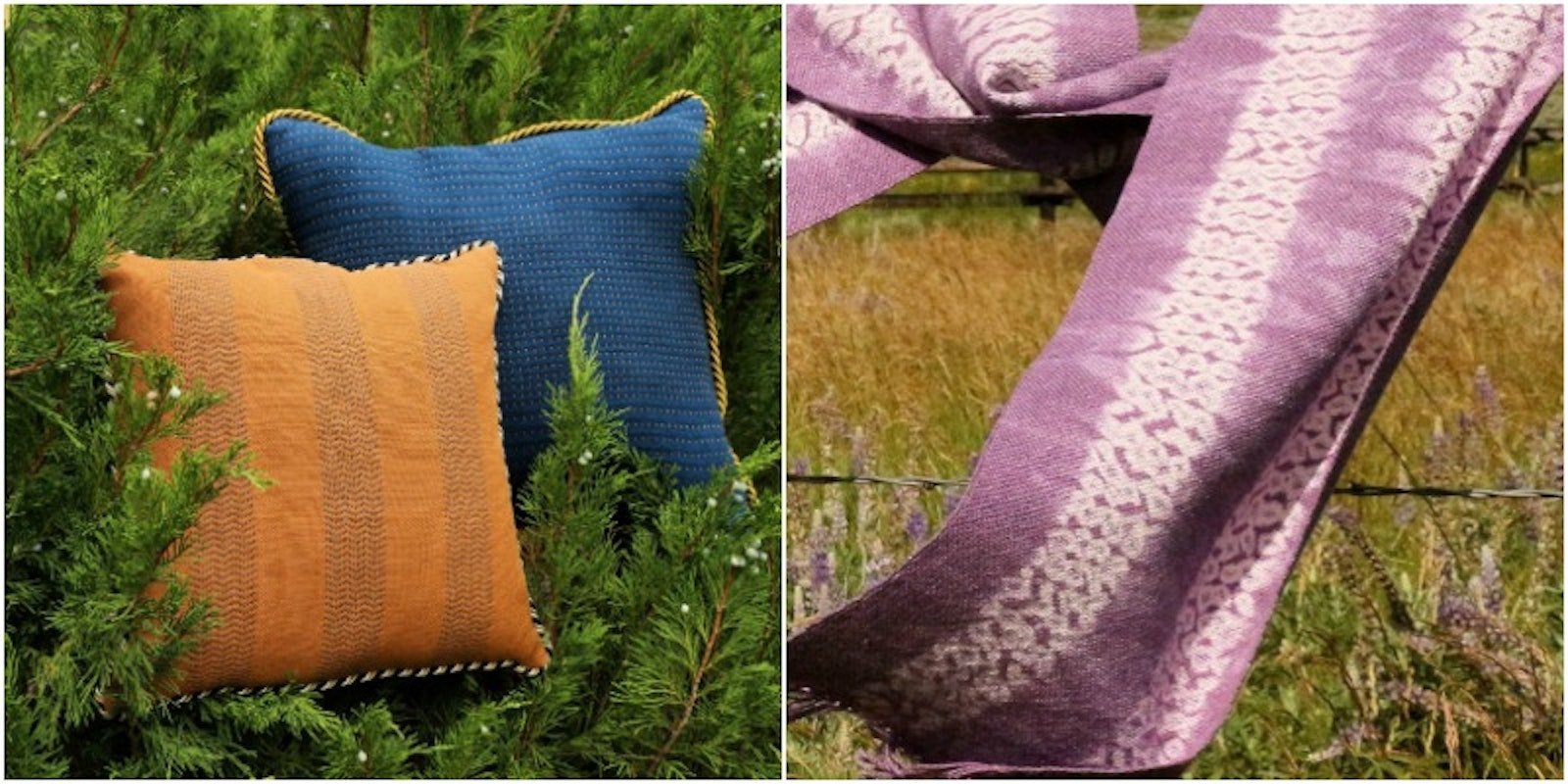It’s the moment so many of you have been waiting for: Deb Essen’s popular book, Easy Weaving with Supplemental Warps is now available in print! Formerly available only as an eBook, Easy Weaving with Supplemental Warps is a wonderful book full of practical tips, weaving techniques, design theory, and beautiful projects photographed against the backdrop of Deb’s scenic home and studio in Montana. It certainly deserves a place of honor in your collection.
Haven’t heard about this book yet? Deb Essen has spent years perfecting weaving techniques for weaving with supplemental warps, without the need for a second back-beam on your loom. This puts all kinds of exciting new possibilities within your grasp, no matter what kind of loom you weave on. Most of the projects require only four shafts!
Here’s Deb herself to explain what you can expect to learn in Easy Weaving with Supplemental Warps:
"A supplemental warp is simply an extra warp that weaves pattern the length of the fabric over a background cloth, much the way a supplemental or “pattern” weft weaves pattern the width of a fabric. You are already familiar with supplemental warp fabrics: the terry-cloth towels in your kitchen and that velvet holiday dress are supplemental warp pile fabrics. Some of the decorator textiles in your home may also be supplemental warp fabrics. Maybe you have a commercially woven table runner with pattern areas that run lengthwise in the fabric.
Supplemental warps have so many possibilities! Instead of being limited to weaving pattern from selvedge to selvedge, you can have stripes of pattern running the length of your fabric, alternating with areas of ground cloth. Supplemental warps can also create 3-dimensional fabric. In this book, there are patterns to create fabric that goes “poof” with Bedford cord and piqué. Supplemental warps can be used to create pile fabrics such as terry-cloth and velvet, and we can use them to create pattern through resist-dyeing techniques—woven shibori!
And whereas selvedge-to-selvedge, supplemental weft patterns require at least two shuttles, one for the background weft and one for the pattern weft, supplemental warp patterns require only one shuttle to weave the fabric.
We can change supplemental weft patterns such as overshot into supplemental warp patterns by “turning” the draft. “Turning a draft” is a shorthand way of saying that the threading becomes the treadling, the treadling becomes the threading, and we adjust the tie-up so that it works. In a turned draft, supplemental warps create the pattern, and the pattern runs lengthwise on the fabric.
Once we turn the drafts, we can isolate pattern sections so they stand out against the plain-weave fabric. My favorite use for supplemental warps is to turn an overshot draft to run lengthwise and break the patterns into sections, letting the designs stand out against the background plain weave."
So which of these supplemental warp weaving techniques will you try first? I would personally like to start with turned monk’s belt, particularly her gorgeous green, black, and gold runner. Wouldn’t that make a lovely addition to a holiday table setting? Wherever you decide to start in Easy Weaving with Supplemental Warps, Deb will guide you to ensure weaving success!
Happy Weaving,
Andrea

